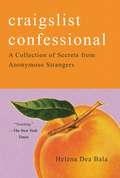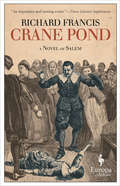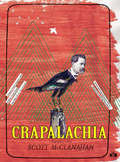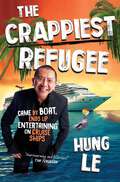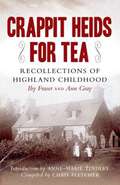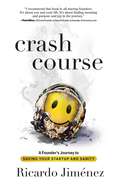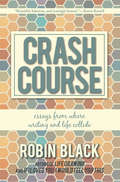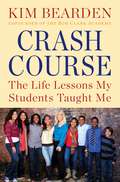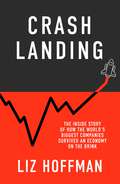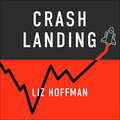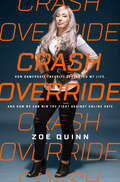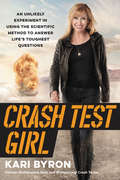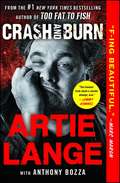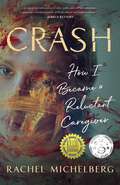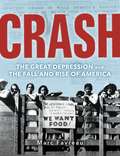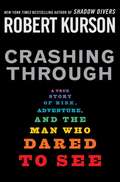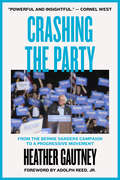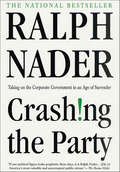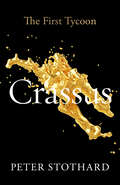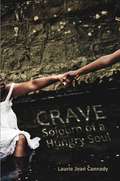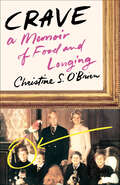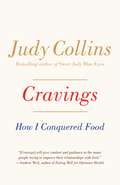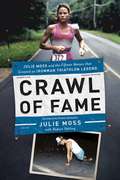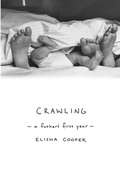- Table View
- List View
Craigslist Confessional: A Collection of Secrets from Anonymous Strangers
by Helena Dea Bala&“Touching.&” —The New York Times For fans of Humans of New York and PostSecret, a collection of raw, urgent, and heartfelt stories, shared anonymously.Helena Dea Bala was an exhausted and isolated DC lobbyist, suffocating under the weight of her student loan debt, when she decided to split her lunch with a man who often panhandled near her office. They chatted effortlessly as they ate; there were no half-truths or white lies, and no fear of judgment. Helena felt connected and unburdened in a way she hadn&’t in years. Inspired, she posted an ad on Craigslist promising to listen, anonymously and for free, to whatever the speaker felt he or she couldn&’t tell anyone else. Emails from people desperate to connect flooded her inbox, and she listened. Within months, Helena quit her job, deferred her loans, and dove into listening full time. The forty first-person confessions in this book are vivid, intimate, and real; they range from devastating traumas, to lost loves, to reflections on hard choices. Some accounts are quotidian, like that of one increasingly estranged husband: &“I want to feel that we&’re not just roommates—that we&’re not just waiting for the kids to grow up so that we can move on.&” Others are deeply disconcerting, like that of a sex addict employed by a religious organization and several are heartening, like that of a mother who dares to hope that her daughter, born with life-threatening heart defects, will one day walk down the aisle: &“Sometimes you need to have the audacity to believe that it will all be okay, that it is okay to have the same kinds of dreams as everyone else.&” In its complex portrayal of the common human experience, Craigslist Confessional challenges us to explore the depths of our vulnerability and expand the borders of our empathy.
Crane Pond: A Novel of Salem
by Richard FrancisThis novel of the Salem Witch Trials from the point of view of a judge is &“leavened with wit [and] finely crafted&” (Kirkus Reviews). In a colony struggling for survival, in a mysterious new world where infant mortality is high and sin is to blame, Samuel Sewall is committed to being a loving family man, a good citizen, and a fair-minded judge. Like any believing Puritan, he agonizes over what others think of him, while striving to act morally correct, keep the peace, and, when possible, enjoy a hefty slice of pie. His one regret is that months earlier, he didn&’t sentence a group of pirates to death. What begins as a touching story of a bumbling man tasked with making judgments in a society where reason is often ephemeral quickly becomes the chilling narrative we know too well. And when public opinion wavers, Sewall learns that what has been done cannot be undone. Crane Pond explores the inner life of a well-meaning man who compromised with evil and went on to regret it. At once a searing view of the Trials, an empathetic portrait of one of the period&’s most tragic figures, and an indictment of the malevolent power of idealism, it is a thrilling new telling of one of America&’s founding stories. &“[Crane Pond] goes straight on to my (small) list of historical novels that draw out the capacities of the form and allow readers to brush against the pleasures and terrors of the past.&” —Hilary Mantel, author of Wolf Hall &“Deftly crafted . . . perfectly balances issues of religion, faith, and law.&” —Library Journal
Crapalachia
by Scott McClanahanWhen Scott McClanahan was fourteen he went to live with his Grandma Ruby and his Uncle Nathan, who suffered from cerebral palsy. <P><P>Crapalachia is a portrait of these formative years, coming-of-age in rural West Virginia. <P>Peopled by colorful characters and their quirky stories, Crapalachia interweaves oral folklore and area history, providing an ambitious and powerful snapshot of overlooked Americana.
Crappiest Refugee
by Hung LeOn the last day of the Vietnam War, nine-year-old Hung jumped on a leaking prawn trawler on the Saigon River, somehow cheating death to become one of the first Vietnamese boat people to arrive Australia, a land where a young man's potential is limited only by his imagination - that is unless you're Hung Le.Defying the stereotype, Hung wasn't a math or computer whizz, he had no doctoring or lawyering abilities, spoke Vietnamese with an Australian accent, and couldn't even play the violin. But what he was blessed with was funny bones, and through winning Red Faces on Hey Hey It's Saturday he managed to make an international career playing the violin out of tune.The Crappiest Refugee is an hilarious and endearing memoir about a boat person who never found his land legs, but who has always seen the funny side.
Crappit Heids for Tea: Recollections of Highland Childhood
by Ann Gray Iby FraserIn this memoir, the daughter of one of the first keeper&’s of Scotland&’s Shinness Estate details life in the early 20th century Scottish Highlands. Sutherland is one of the most ruggedly beautiful and sparsely populated parts of Scotland. In the nineteenth century, the Duke of Sutherland set about improving his landholdings to make them more productive by building lodges for sporting tenants who came to enjoy the summer fishing and shooting grouse and deer. In the 1870s some 3,000 acres of land were reclaimed at Shinness. A lodge was built there in 1882 and allocated some 2,500 acres of moorland for grouse and grazing, together with the fishings on Loch Shin and its rivers. One of the first keepers at the estate was John Fraser. His daughter, Iby, became a teacher at Lairg School. In the 1970s, long after the Fletcher family had taken on Shinness Estate, Iby wrote down some recollections of her early life for Mrs. Fletcher's interest. This charming book offers insightful descriptions of everyday life—from cooking, framing, and game keeping to medicine, schooling, and childhood games—as well as of the events that had a profound effect on communities everywhere, including the emergence of the motor car and World War I. Several other local contemporaries also contribute their memories, including Ann Gray, the daughter of the farmer who took on the reclaimed land in the 1880s, and Jimmy Bain, a crofter born after the Great War.
Crash Course: A Founder's Journey to Saving Your Startup and Sanity
by Ricardo JiménezIn Crash Course, Ricardo Jiménez recounts his personal startup failure so that other entrepreneurs and business founders may learn from his mistakes as they chase their own business dreams.Nine times out of ten, the passionate, well-educated, semi-cocky entrepreneur with dreams of taking the market by storm . . . fails. Whether it&’s a quick crash and burn within the first year or a longer struggle over several years, the result is usually the same: an exhausted, confused, financially broke, and emotionally broken startup failure. We love to hear stories of lean-and-mean startups that bootstrap their way to a hard-fought victory. But what about the other 90 percent? What about the startup founders who were chewed up and spit out by potential investors, dirty-dealing partners, and fickle customers? What about the ones who dared to give their dream wings . . . only to watch it crash on the runway? Don&’t we have as much or more to learn from them as we do the lucky few who actually make it? In Crash Course, entrepreneur Ricardo Jimenez crawls out from under the wreckage of his failed startup and forces himself to explore how his best-laid plans went so terribly wrong. With surgical precision, Jiménez explores every decision, meeting, step, and misstep that turned his once-promising international toy company into an expensive lesson in how not to succeed in the highly competitive global marketplace. Putting pride aside, Jiménez puts his whole story on display—the good, the bad, and the terrible—with the hope that the next generation of startup entrepreneurs can learn from his mistakes and take a pain-free shortcut to the important lessons he had to learn the hard way.
Crash Course: Essays From Where Writing and Life Collide
by Robin BlackRobin Black's path through loss and survival delivered her to the writer's life. Agoraphobia, the challenges of parenting a child with special needs, and the legacy of a formidable father all shaped that journey. In these deeply personal and instructive essays, the author of the internationally acclaimed If I loved you, I would tell you this and Life Drawing explores the making of art through the experiences of building a life. Engaging, challenging, and moving, Crash Course is full of insight into how to write-and why.From "Autumn, 1972, A Moment at Which I Became a Writer":I sense, even now, the reverberations of a kind of shattering of my foundation and a quick rebuild, a change at a molecular level of who I understood myself to be. No longer someone who could look at another person without wondering what their life was like, but someone with a new curiosity about what people's stories might actually be.Robin Black is the author of the story collection, If I loved you, I would tell you this and the novel Life Drawing, both critically acclaimed, and both published in multiple languages. She has developed a loyal, enthusiastic following for her essays on life and writing, online and in such publications as the New York Times, the Chicago Tribune, and O Magazine. She lives with her husband in Philadelphia, Pennsylvania, where the house is always open for their three grown children.
Crash Course: From the Good War to the Forever War (War Culture)
by H. Bruce FranklinGrowing up during the Second World War, H. Bruce Franklin believed what he was told: that America’s victory would lead to a new era of world peace. Like most Americans, he was soon led to believe in a world-wide Communist conspiracy that menaced the United States, forcing the nation into a disastrous war in Korea. But once he joined the U.S. Air Force and began flying top-secret missions as a navigator and intelligence officer, what he learned was eye-opening. He saw that even as the U.S. preached about peace and freedom, it was engaging in an endless cycle of warfare, bringing devastation and oppression to fledgling democracies across the globe. Now, after fifty years as a renowned cultural historian, Franklin offers a set of hard-learned lessons about modern American history. Crash Course is essential reading for anyone who wonders how America ended up where it is today: with a deeply divided and disillusioned populace, led by a dysfunctional government, and mired in unwinnable wars. It also finds startling parallels between America’s foreign military exploits and the equally brutal tactics used on the home front to crush organized labor, antiwar, and civil rights movements. More than just a memoir or a history book, Crash Course gives readers a unique firsthand look at the building of the American empire and the damage it has wrought. Shocking and gripping as any thriller, it exposes the endless deception of the American public, and reveals from inside how and why many millions of Americans have been struggling for decades against our own government in a fight for peace and justice.
Crash Course: The Life Lessons My Students Taught Me
by Kim BeardenThe inspiring true story of a teacher’s experiences with her students and the life lessons she learned that can help others find joy and success.<P> Crash Course chronicles the life lessons that Kim Bearden has learned during an award-winning career in education that has spanned three decades. Kim has taught more than 2,000 students, and each has shown her something about the world and the abundant capacity for love, resilience, and appreciation that we all possess. By sharing her students’ stories, she teaches their inspiring lessons to us all.<P> Throughout the ups and downs of her professional and personal life, Kim found that her students were the light that illuminated her path; they were her sanctuary in the storm. From her challenges as a first year teacher, to her triumphs as the cofounder of the highly acclaimed Ron Clark Academy, Kim shares how children can teach each of us the importance of building relationships, abandoning fear, embracing one’s unique gifts, and living with passion.<P> Full of honesty, humor, heartbreak, and humanity, Kim’s experiences show how children can help any one of us, despite life’s obstacles, find the joy and significance in both our personal and professional lives.
Crash Landing: The Inside Story Of How The World's Biggest Companies Survived An Economy On The Brink
by Liz HoffmanIt was the ultimate test for CEOs, and almost none of them saw it coming.__________In early March 2020, with the Dow Jones flirting with 30,000, the world's biggest companies were riding an eleven-year economic high. By the end of the month, millions would be out of work, iconic firms were begging for bailouts, and countless small businesses were in freefall. Slick consulting teams and country-club connections were suddenly of little use: business leaders were fumbling in the dark, tossing out long-term strategy and making decisions on the fly-decisions, they hoped, that might just save them.In Crash Landing, award-winning business journalist Liz Hoffman shows how the pandemic set the economy on fire-but if you look closely, the tinder was already there.Based on astonishing access inside some of the world's biggest and most iconic companies, this is a gripping account of the most remarkable period in modern economic history, revealing how they battled against an economic catastrophe for which there was no playbook: among them, AirBnB's Brian Chesky, blindsided by a virus in the middle of a high-stakes effort to go public; American Airlines's Doug Parker, shuttling between K Street and the White House, determined to secure a multi-billion-dollar bailout; and Ford's Jim Hackett, as his assembly lines went from churning out cars to ventilators.Crash Landing reveals the fear, grit, and gambles of the pandemic economy, while probing its implications for the future of work, corporate leadership, and capitalism itself, asking: Will this remarkable time give rise to newfound resilience, or become just anothercostly mistake to be forgotten?__________A gripping account of the financial carnage of the pandemic, revealing the fear, grit, and gambles that drove the economy's winners and losers.
Crash Landing: The Inside Story Of How The World's Biggest Companies Survived An Economy On The Brink
by Liz HoffmanAn exposé of the billionaires who built the US economy on sand, and the virus that saw it crumble.A kaleidoscopic account of the financial carnage of the pandemic, revealing the fear, grit, and gambles that drove the economy's winners and losers-from a leading Wall Street Journal reporter.Crash Landing takes readers behind the scenes of an unprecedented period of global economic turmoil, letting readers into the inner lives of the men and women trying to save big business from the brink.The world's most powerful CEOs never saw it coming, especially after a decade of growth that saw them riding high. Then whispers of a new flu-like illness became a crescendo, and by the end of March 2020 ten million people were out of work, iconic firms were begging for bailouts, and countless small businesses were in freefall.How do you sustain a workforce that can no longer work? How do you ride out a crisis that has no end in sight? How do you prepare for a recovery in a new world? Liz Hoffman pulls back the curtain on the most violent few months in the modern global economy, taking readers inside boardrooms, onto factory floors and into trading pits. Featuring original interviews with the people responsible for the economy, and in charge of making sure it survives. A gripping story of big business and even bigger characters, Crash Landing will appeal to fans of Michael Lewis and Andrew Sorkin. This is an audiobook that gives you the inside scoop, and answers the most important question of today: Will this remarkable time give rise to newfound resilience, or become just another costly mistake to be forgotten?(P) 2022 Hodder & Stoughton Limited
Crash Override: How Gamergate (Nearly) Destroyed My Life, and How We Can Win the Fight Against Online Hate
by Zoe Quinn<P>You've heard the stories about the dark side of the internet--hackers, #gamergate, anonymous mobs attacking an unlucky victim, and revenge porn--but they remain just that: stories. Surely these things would never happen to you. <P>Zoe Quinn used to feel the same way. She is a video game developer whose ex-boyfriend published a crazed blog post cobbled together from private information, half-truths, and outright fictions, along with a rallying cry to the online hordes to go after her. They answered in the form of a so-called movement known as #gamergate--they hacked her accounts; stole nude photos of her; harassed her family, friends, and colleagues; and threatened to rape and murder her. But instead of shrinking into silence as the online mobs wanted her to, she raised her voice and spoke out against this vicious online culture and for making the internet a safer place for everyone. <P>In the years since #gamergate, Quinn has helped thousands of people with her advocacy and online-abuse crisis resource Crash Override Network. From locking down victims' personal accounts to working with tech companies and lawmakers to inform policy, she has firsthand knowledge about every angle of online abuse, what powerful institutions are (and aren't) doing about it, and how we can protect our digital spaces and selves. <P>Crash Override offers an up-close look inside the controversy, threats, and social and cultural battles that started in the far corners of the internet and have since permeated our online lives. Through her story--as target and as activist--Quinn provides a human look at the ways the internet impacts our lives and culture, along with practical advice for keeping yourself and others safe online.
Crash Test Girl: An Unlikely Experiment in Using the Scientific Method to Answer Life’s Toughest Questions
by Kari ByronKari Byron—former host of the wildly popular, iconic cult classic MythBusters—shows how to crash test your way through life, no lab coat required. Kari Byron’s story hasn’t been a straight line. She started out as a broke artist living in San Francisco, writing poems on a crowded bus on the way to one of her three jobs. Many curve balls, unexpected twists, and yes, literal and figurative explosions later, and she’s one of the world’s most respected women in science entertainment, blowing stuff up on national television and getting paid for it! In Crash Test Girl, Kari reveals her fascinating life story on the set of MythBusters and beyond. With her signature gusto and roll-up-your-sleeves enthusiasm, she invites readers behind the duct tape and the dynamite, to the unlikely friendships and low-budget sets that turned a crazy idea into a famously inventive show with a rabid fanbase. The truth is, Mythbusters was never meant to be a science show. But attaching a rocket to a car, riding a motorcycle on water, or lighting 500 pounds of coffee creamer on fire requires a decent understanding of chemistry, physics, and engineering. Thus, the cast and crew brought in the scientific method to work through each problem: Question. Hypothesize. Experiment. Analyze. Conclude. And as Kari came to learn in her own life, not only is the scientific method the best approach for busting myths, it’s also the perfect tool for solving everyday issues, including:Career · Love · Creativity · Setbacks · Money · Sexuality · Depression · BraveryCrash Test Girl reminds us that science is for everyone, as long as you’re willing to strap in, put on your safety goggles, hit a few walls, and learn from the results. Using a combination of methodical experimentation and unconventional creativity, you’ll come to the most important conclusion of all: In life, sometimes you crash and burn, but you can always crash and learn.
Crash and Burn
by Artie LangeVeteran comedian Artie Lange turns an unflinching eye and his signature wit on his perilous descent into drug addiction, life-threatening depression, and ultimately, his recovery, in the follow-up to his hilariously raw debut, the #1 New York Times bestseller Too Fat to Fish.At a high point in his career, Artie Lange played a sold-out show in Carnegie Hall and totally killed—yet during his standing ovation, all he could think of were the two bags of heroin in his pocket. In the midst of a deep, self-destructive depression, addicted to heroin and prescription drugs, he lashed out at everyone around him—from his fellow cast members on The Howard Stern Show, to celebrity guests, to his longtime friends, and even his own family. By turns dark and disturbing, hilarious and heartbreaking, and always drop-dead honest, the New York Times bestseller Crash and Burn lifts the curtain on Lange’s dangerous slide. For the first time, Artie reveals all: the full truth behind his now legendary Stern Show meltdown, his suicide attempt (which he relates in terrifying detail), surprising stints in rehab, and painful relapses. With the help and support of friends and family, Artie claws his way back, turning his life and career around. And despite his slip-ups, backslides, and permanent losses, Artie forges on.
Crash: How I Became a Reluctant Caregiver
by Rachel Michelberg&“. . . an engaging exploration of duty, guilt, and self-preservation. . . . A cleareyed consideration of difficult ethical and familial choices.&”—KIRKUS REVIEWSRachel likes to think of herself as a nice Jewish girl, dedicated to doing what&’s honorable, just as her parents raised her to do. But when her husband, David, survives a plane crash and is left with severe brain damage, she faces a choice: will she dedicate her life to caring for a man she no longer loves, or walk away?Their marriage had been rocky at the time of the accident, and though she wants to do the right thing, Rachel doesn&’t know how she is supposed to care for two kids in addition to a now irrational, incontinent, and seizure-prone grown man. And how will she manage to see her lover? But then again, what kind of selfish monster would refuse to care for her disabled husband, no matter how unhappy her marriage had been? Rachel wants to believe that she can dedicate her life to David&’s needs, but knows in her heart it is impossible. Crash tackles a pervasive dilemma in our culture: the moral conflicts individuals face when caregiving for a disabled or cognitively impaired family member.
Crash: The Great Depression and the Fall and Rise of America
by Marc FavreauThe incredible true story of how real people weathered one of the most turbulent periods in American history—the Great Depression—and emerged triumphant. From the sweeping consequences of the stock market crash to the riveting stories of individuals and communities caught up in a real American dystopia, discover how the country we live in today was built in response to a time when people from all walks of life fell victim to poverty, insecurity, and fear. Meet fascinating historical characters like Herbert Hoover, Franklin Delano and Eleanor Roosevelt, Frances Perkins, Dorothea Lange, Walter White, and Mary McLeod Bethune. See what life was like for regular Americans as the country went from the highs of the Roaring Twenties to the lows of the Great Depression, before bouncing back again during World War II. Explore pivotal scenes such as the creation of the New Deal, life in the Dust Bowl, the sit-down strikes in Michigan, the Scottsboro case, and the rise of Father Coughlin. Packed with photographs and firsthand accounts, and written with a keen understanding of the upheaval of the 1930s, Crash shares the incredible story of how America survived—and, ultimately, thrived.
Crashing Through
by Robert KursonIn his critically acclaimed bestsellerShadow Divers, Robert Kurson explored the depths of history, friendship, and compulsion. Now Kurson returns with another thrilling adventure–the stunning true story of one man’s heroic odyssey from blindness into sight. Mike May spent his life crashing through. Blinded at age three, he defied expectations by breaking world records in downhill speed skiing, joining the CIA, and becoming a successful inventor, entrepreneur, and family man. He had never yearned for...
Crashing the Party: From the Bernie Sanders Campaign to a Progressive Movement
by Heather Gautney Adolph L. ReedA leading activist-scholar on what’s next in the Sanders revolutionBernie Sanders shocked the political establishment by winning 13 million votes and a majority of young voters in the 2016 Democratic primary. Since that upset, repeated polls have judged this democratic socialist to be the most popular politician in the United States. What lessons can be drawn from his surprising insurgent campaign? Longtime author and activist Heather Gautney was a Policy Fellow in Sanders’s Washington, DC, office and a volunteer researcher and organizer on his presidential campaign. In reviewing what enabled Sanders to reach out to an unprecedented number with a socialist message—and what stalled his progress—she draws lessons on the prospects and perils of building a progressive movement in the United States. Gautney’s poignant account of the role that race and class played in this election cycle, her anatomy of the conflicting dynamics of movement and electoral ambitions, and her clear-eyed analysis of the Democratic position following Trump’s victory will serve as a useful starting point for many readers newly aware of the limitations of the Democratic Party and the immensity of the challenges ahead.
Crashing the Party: Taking on the Corporate Government in an Age of Surrender
by Ralph NaderRalph Nader is one of America's most passionate and effective social critics. He has been called a muckraker, a consumer crusader, and America's public defender. The cars we drive, the food we eat, the water we drink-their safety has been enhanced largely due to Ralph Nader. His inspiration and example have rallied consumer advocates, citizen activists, public interest lawyers, and government officials into action, and in the 2000 election, nearly three million people voted for him.An inspiring and defiant memoir, Crashing the Party takes us inside Nader's campaign and explains what it took to fight the two-party juggernaut; why Bush and Gore were really afraid to let him in on their debates; why progressive Democrats have been left behind and ignored by their party; how Democrat and Republican interests have been lost to corporate bankrolling; and what needs to happen in the future for people to take back their political system.
Crassus: The First Tycoon (Ancient Lives)
by Peter StothardThe story of Rome&’s richest man, who died a humiliating desert death in search of military glory Marcus Licinius Crassus (115–53 BCE) was a modern man in an ancient world, a pioneer disrupter of finance and politics, and the richest man of the last years of the Roman republic. Without his catastrophic ambition, this trailblazing tycoon might have quietly entered history as Rome&’s first modern political financier. Instead, Crassus and his son led an army on an unprovoked campaign against Parthia into what are now the borderlands of Turkey, Syria, and Iraq, losing a battle at Carrhae which scarred Roman minds for generations. After Crassus was killed, historians told many stories of his demise. Some said that his open mouth, shriveled by desert air, had been filled with molten gold as testament to his lifetime of greed. His story poses both immediate and lasting questions about the intertwining of money, ambition, and power.
Crave
by Laurie Jean CannadyCrave is a coming-of-age memoir that chronicles a young girl's journey through abuse and impoverishment. The effusive narration descends into the depths of personal and sexual degradation, perpetual hunger for food, safety and survival. While moving through gritty exposés of poverty, abuse, and starvation, Crave renders a continuing search for sustenance that simply will not die.Laurie Jean Cannady is most recognizable through her voice. Lyrical and august, yet strangely intimate, her lucid memory for the texture of daily existence weaves the reader into the fabric of the story. We discover that the most slender threads bind the strongest. It is no surprise this memoir is a narrative about a victim who becomes a survivor. Cannady is assertive, motivational, and unafraid to reach her target audience: women, African Americans, high-school students, college students, survivors of physical and sexual abuse, veterans, people raised by single parents, and folks who are living in or have lived through impoverishment.Laurie Jean Cannady, an associate professor of English at Lock Haven University, spends much of her time encouraging students to realize their true potential. She is a consummate champion of women's issues, veterans' issues, and issues affecting underprivileged youth. Cannady resides in central Pennsylvania with Chico Cannady and their three children.
Crave: A Memoir of Food and Longing
by Christine S. O'Brien“Do you mind that I’m going to be writing a book about the fact that I was hungry?” I asked my mother. “Just tell a good story,” she replied.Hunger comes in many forms. In her memoir, Crave, Christine S. O’Brien tells a story of family turmoil and incessant hunger hidden behind the luxury and privilege of New York’s famed Dakota apartment building. Her explosively angry father was ABC Executive Ed Scherick, the successful television and film producer who created shows and films like ABC’s Wide World of Sports and The Stepford Wives. Raised on farm in the Midwest, her calm, beautiful mother Carol narrowly survived a dramatic accident when she was child. There was no hint of instability in her life until one day she collapsed in the family’s apartment and spent the next year in bed. “Your mother’s illness is not physical,” Christine’s father tells her. Craving a cure for a malady that the doctors said had no physical basis, Carol resorted to increasingly bizarre nutritional diets—from raw liver to fresh yeast—before beginning a rigid dietary regime known as “The Program.” It consisted largely of celery juice and blended salads—a forerunner of today’s smoothie. Determined to preserve the health of her family, Carol insisted that they follow The Program. Despite their constant hunger, Christine and her three younger brothers loyally followed their mother’s eating plan, even as their father’s rage grew and grew. The more their father screamed, the more their mother’s very survival seemed to depend on their total adherence to The Program. This well-meant tyranny of the dinner table led Christine to her own cravings for family, for food, and for the words to tell the story of her hunger. Crave is the chronicle of Christine’s painful and ultimately satisfying awakening. And, just as her mother asked, it’s a good story.
Cravings: How I Conquered Food
by Judy CollinsA no-holds-barred account of folk legend Judy Collins's harrowing struggle with compulsive overeating and of the journey that led her to a solution. Since childhood Judy Collins has had a tumultuous, fraught relationship with food. Her issues with overeating nearly claimed her career and her life. For decades she thought she simply lacked self-discipline. She tried nearly every diet plan that exists, often turning to alcohol to dull the pain of yet another failed attempt to control her seemingly insatiable cravings. Today, Judy knows she suffers from an addiction to sugar and grains, flour and wheat. She adheres to a strict diet of unprocessed foods consumed in carefully measured portions. This solution has allowed her to maintain a healthy weight for years, to enjoy the glow of good health, and to attain peace of mind. Alternating between chapters on her life and those of the many diet gurus she has encountered along the way (Atkins, Jean Nidetch of Weight Watchers, Andrew Weil, to name a few), Cravings is the culmination of Judy's genuine desire to share what she's learned—so that no one else has navigate her heart-rending path to recovery.
Crawl of Fame: Julie Moss And The Fifteen Meters That Created An Ironman Triathlon Legend
by Armen Keteyian Robert Yehling Julie MossThe courageous and transformative story of triathlon hall-of-fame athlete Julie Moss. In 1982, Julie Moss ran the Ironman triathlon for her college senior research project. Her idea was quirky, even crazy; only a handful of hardcore, highly trained enthusiasts competed in the little-known, 140.6-mile combination of swimming, cycling, and running. Julie brought no experience or appreciable training beyond running two marathons. She did bring a latent willpower that, the world soon found out, wouldn’t be denied. What happened next changed Ironman forever . . . After becoming the unlikely leader during the marathon, the final leg of the Ironman, Julie fell and lost all bodily function fifteen meters (50 feet) from the finish. While on hands and knees, she watched her rival pass her. Thirty seconds later, she crawled across the line—stunning the millions who were watching on television. At age twenty-three, Julie became the instant global icon, and the public face of fitness and endurance sports — which exploded in popularity, partly because of her inspiration. That this young co-ed would represent such a new sport was unlikely. That she would inspire millions to change the courses of their lives in the three decades years since was unthinkable. Yet, it happened. And keeps happening. In April 2017 Julie won her age group in the Ironman North American Championships—racing 25 minutes faster than her 1982 Ironman. How does a 58-year-old woman beat the time of her 23-year-old self? Which begs the question, could she also beat her 1982 time in the more demanding Kona? That’s the goal, and the world will find out in October 2018. Crawl of Fame is the long-awaited release of her incredible story. Julie describes how she found her greater purpose while lying across the finish line at Ironman 1982 — and how that greater purpose as a woman, athlete, endurance sports symbol and, now, iconic figure has defined her life and inspired others since. Several endurance sports athletes have written memoirs, but none have changed a sport so dramatically as Julie Moss. Now, readers will join the inner and outer journey of one of the world’s most impressive athletes, a woman who has already inspired millions — with millions more to come.
Crawling: A Father's First Year
by Elisha CooperFrom an award-winning illustrator and children's book author comes a touching, honest, and laugh-out-loud funny memoir about parenting, love, and the wonder of new life. "I would have sooner been handed a bomb than a baby," admits Elisha Cooper, early in his charming chronicle of his first year as a father. But that, like everything else, is about to change. Luckily, Cooper recorded it all: from playing Outkast's "So Fresh, So Clean" as he changes his daughter's diaper, to having a romantic dinner at Chez Panisse with his wife-and baby. Cooper's disarmingly beautiful essays about the perils and pleasures of parenthood will appeal to any reader, and especially all parents, no matter how old their children. He has done what every new parent is too busy, or too tired, to do--captured with grace the joys, fears, and stumbles of learning to raise a child for the first time.
